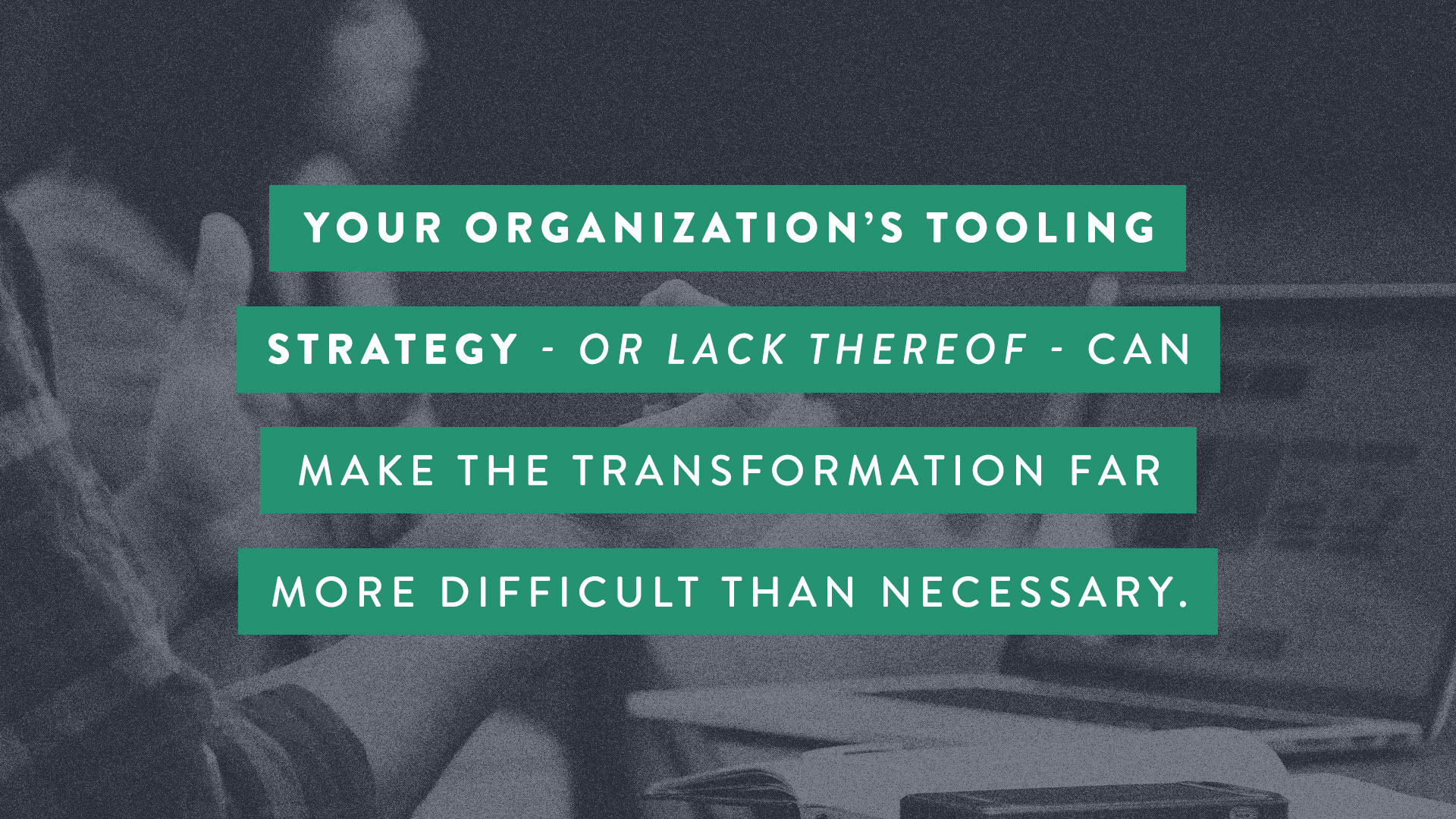Top 5 Ways Your ALM Tooling Strategy May Be Blocking Transformation
Ultimately, the Application Lifecycle Management (ALM) tool your organization chooses or the way that it is configured—no matter how great—is not going to transform your organization. However, your organization’s tooling strategy (or lack thereof) can make the Transformation far more difficult than necessary. Your ALM tool should work to enable the system to which your organization is transforming.
Here are some common things that we see that indicate an organization does not have a clear tooling strategy that enables the Transformation:
1) There is a mismatch between your organization’s work processes and the ALM workflows.
Changing the configuration of your ALM tool (without changing anything else) will not change the way that your teams and portfolios flow work. It will likely just make it more challenging for everyone involved. When we begin working with an organization, we work to intentionally configure the ALM tool to match the new system that the organization is Transforming to, including ensuring that the workflows in the tool match the way work should flow in the new system. When teams try to use an ALM tool that doesn’t actually match the way that they should be working, they will often get confused, frustrated, or spend a lot of time finding different workarounds.
2) Focusing on built-in metrics reports the tool offers rather than having a clear metrics strategy.
When it comes to capturing metrics from our ALM tool, you need to start with a strong understanding of what metrics you need to collect rather than what metrics are easy to collect. While using default or built-in reports isn’t inherently bad, often we see this when organizations don’t have a clear Metrics strategy. You want to make sure you’re starting by defining which metrics you need to collect based on your specific goals, and then figure out how to get those metrics from the ALM tool—even if it requires manipulation of the data in another tool like Excel or a BI tool. Metrics should be used to drive action or make decisions. A built-in report is unlikely to capture all the exact metrics that your teams and organization needs to make decisions.
3) Representation of the hierarchy of work is unclear within the ALM tool.
What we’ve often seen with clients we worked with in the past is that, of the work that is inflight within the ALM tool, the structure is not represented transparently. With different terminology being used such as initiatives as epics, features as stories, tasks as stories, and so on, the need for a common language to be reflected within the tool becomes even more evident. Without a clear hierarchy in place, teams are often left to spend time translating between what is happening versus what is reflected in the tool. This is important because we need to visualize how work ties to strategy to ensure that teams are working on the most important things that bring value to the customer/business.
4) Tool usage is not consistent within teams.
Many of the popular ALM tools offered in the market right now generally provide flexibility to suit your organization’s needs, whether through governance or structure. Though this is regarded as a benefit, without a clear strategy in place, you can have pockets of different customization across the organization. Portfolio and Product teams should clearly understand how delivery teams are managing work in the tool so they have a clear view of the flow of value aggregated from multiple delivery teams. This means consistent usage of workflows and terminology so that teams can effectively collaborate.
5) Information about work in the system is disjointed across many tools.
Companies purchase SaaS tools to solve a particular problem for the business. However, using too many tools can be counterproductive for everyone. People should clearly understand where to go in an organization to get information about the work and the problems for context. Having too many tools in your ecosystem with similar capabilities results in loss of data fidelity and users constantly switching context. For example, risk tracking may be done in an Excel sheet, a SharePoint site or in an ALM tool. Rather than aggregating the information in one place for teams to clearly see, users only get part of the picture.
Building a More Effective Strategy
For tooling to be most effective, your ALM tooling strategy should minimize complexity and reflect reality as much as possible. Attributes of a good ALM tooling strategy include how your flow and delivery metrics will be captured, how organization-wide, portfolio-wide, and team specific working norms will be used within the tool.


